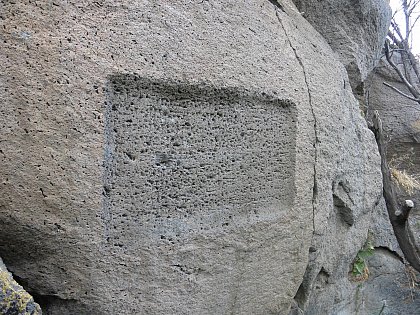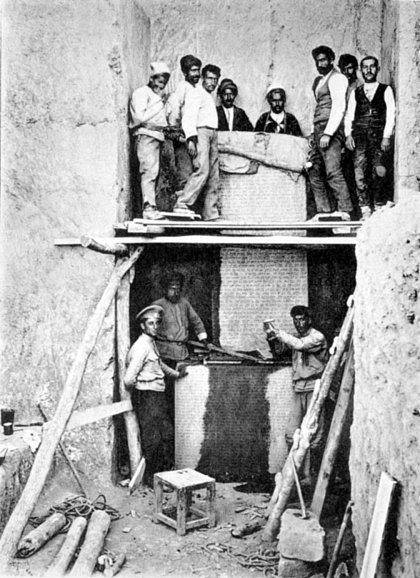Project Background
Countless Urartian stone inscriptions along the modern-day banks of Lake Sevan (Lchashen, Gawar, Tsovinar, Tsovak) serve as evidence for a huge settlement in the region, whose inhabitants had a direct relationship to the extraction of raw materials during the period before the common era. The Ancient Near Eastern kingdom of the Urartians (known Biblically as Ararat), originating from Lake Van in Asia Minor, is known above all for its countless and gradual conquest campaigns that eventually also led to the area under investigation near Lake Sevan. One of the rockface inscriptions (Tsovak) reports that, under the regency of Sarduri II, a campaign (742-739 BCE) occurred against two kingdoms that were located in our area of interest. A further rockface inscription – the Annals of Sarduri II – elucidates one of the reasons for this expansion. It tells of the access to “SADU Uškiani” made possible by the conquest. The toponym Uškiani has been hotly debated and has been connected by researchers with the Sumerian word for gold (guškin) – the “Mountain of Gold”. Because the word Uškiani neither belongs to the Urartian nor local languages, the assumption is that it originated from a pre-Urartian period. Interestingly, an active, open-cast gold mine is located today on the location of this mountain pass. Rich deposits of placer gold were able to be detected in the rivers and streams in the area of interest during the preliminary examinations (see “preliminary archaeological and geological investigations” below).
Our aim is to determine whether the historical claims of a gold-rich mountain region can be evinced using archaeological finds and contexts. The project’s main focus forms a comprehensive, multidisciplinary investigation of the Bronze Age settlement region in its topographical entirety. The proposed project is based on a balanced mixture of deductive and inductive working methods; that is to say, alongside the direct investigation of selected find sites (archaeological excavations of settlements and tumuli), systematic research of the surrounding micro- and macro-regions with regard to the natural and anthropogenically altered landscape will be essential. Similarly, the reconstruction of prehistoric infrastructure (extraction of raw materials and its further processing), as well as trade and exchange within the social spheres of ancient Armenia is of particular significance.

Urartäische Felsinschrift bei Tsovak
am Sevan See
(Foto: R. Kunze, Halle)

Annalen von Sarduri II. am Van See während den Ausgrabungsarbeiten im Jahre 1915
(Foto: E. Genkin)

